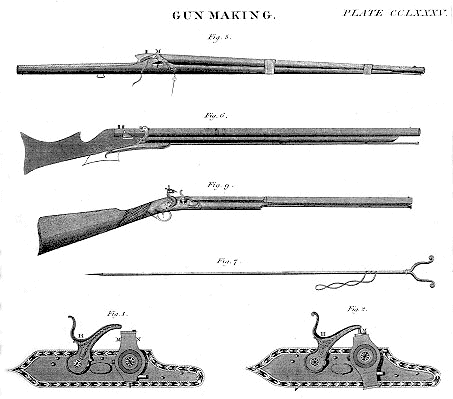Interchangeability
Today, a look at interchangeable parts. The University of Houston's College of Engineering presents this series about the machines that make our civilization run, and the people whose ingenuity created them.
The full industrialization of the West took place in two stages. First the Industrial Revolution -- the rise of steam-powered manufacturing in England around the 1780s. Second was the wide development of assembly-line techniques using interchangeable parts. That occurred only 100 years ago.
The idea of making machine parts interchangeable is pretty old, but that was harder than you might think. Gutenberg's printing press absolutely depended on letters being completely interchangeable. To make it work, he had to couple remarkable ingenuity with his jeweler's skills.
It takes the skill of a jeweler to make precision parts interchangeable. And when the Industrial Revolution gave us machine tools that could work with a jeweler's precision, interchangeability quickly became a kind of holy grail for manufacturers. Even Boulton and Watt managed some degree of interchangeability in their steam engines.
But the first country that tried to manufacture parts that could be interchanged in factory assembly was France. In 1785 Benjamin Franklin told about a French gunsmith who'd managed to make muskets with interchangeable parts. Still, when Eli Whitney got American government support to do the same thing in 1794, he did it by convincing people the idea was unknown in Europe. Worse than that, he also did some hand-work and hand-selection on the parts he used in his demonstration.
Making guns with truly interchangeable parts was very hard to do. We'd made clocks with interchangeable parts as early as 1828 -- that was easier. But the military wanted to be able to interchange the parts of guns in the field. They never did manage to do that with their service revolvers, but their muskets and rifles could be made with looser tolerances. By 1860, on the eve of the Civil War, we'd achieved interchangeability in military rifles and muskets, but we were far from it in making handguns.
After the Civil War, the idea of interchangeable assembly spread quickly through American manufacturing. The small-arms maker Remington expanded the idea -- first to make sewing machines and then typewriters. By the time Henry Ford carried the assembly line to such a remarkable level in 1913, America was already established as the world leader in production. But getting there was the result of a dogged, hundred-year effort to make interchangeability work.
I'm John Lienhard, at the University of Houston, where we're interested in the way inventive minds work.
(Theme music)
Hounshell. D. A., From the American System to Mass Production, 1800-1822: The Development of Manufacturing Technology in the United States. Baltimore: Johns Hopkins University Press, 1984.
For more on the French involvement in making muskets with interchangeable parts, see Episode 1252.

(From the 1832 Edinburgh Encyclopaedia)
Early 19th century gun-making